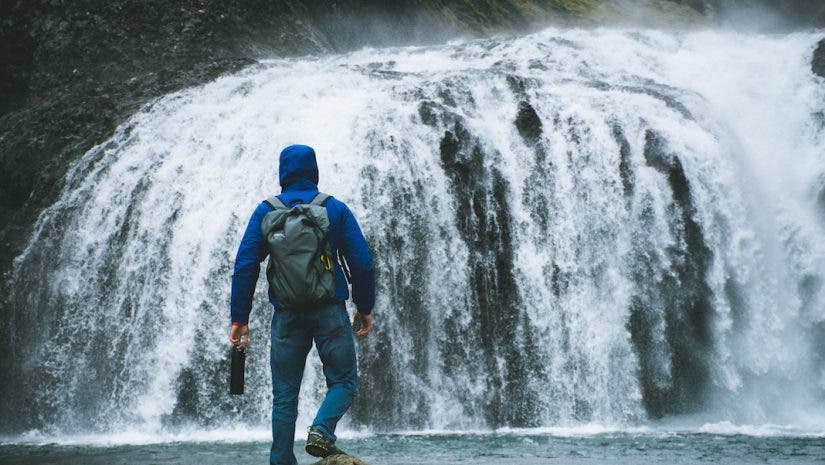Your backpack is your office, while you’re on-the-go and in the field. And in all of my outdoor adventures, it has been a necessary addition to my packing list. Here’s why.
Size matters
Even though I always say that it’s better to “shoot simply” and go light, you will still be carrying around one to three lenses, a camera body, laptop or tablet, memory cards, batteries, filters, and maybe a drone, gimbal or other equipment needed for a job. Not to mention, you want to have room for rain jacket or extra layer, snack, and your water, if you plan to shoot all day. You need the space for that gear, and the worst feeling is not having enough room or feeling like your backpack may bust at the seams. So find a backpack that fits what you need, with room to spare.
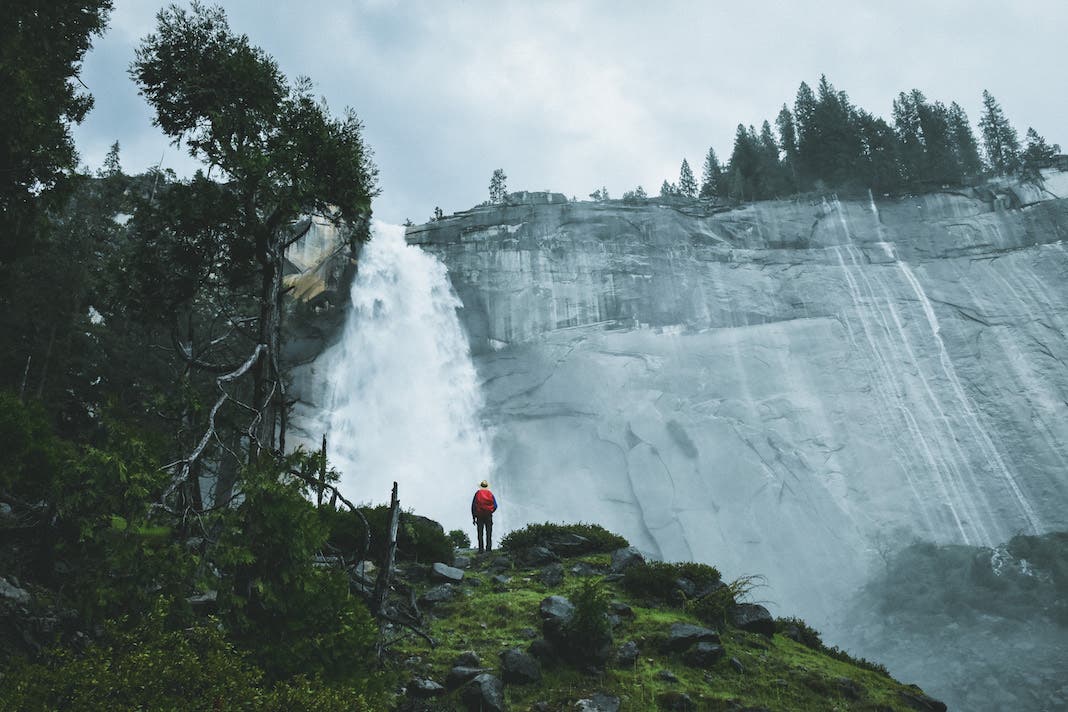
Strap in. It’s going to be a bumpy ride
While you want to carry a camera backpack that maximizes your internal volume, you also want to have a camera backpack that can maximizes external space as well. Buying a backpack that features an intelligent and adaptive strap and buckle system to haul bigger items like a tripod is really important on any photography expedition. Make sure to look for backpacks that have a system that is meant for capability, or even has adaptable compartments that extend the internal usable space of a pack (though I don’t ever recommend attaching a lens compartment on the outside of your backpack to protect your gear from weather or greedy fingers).
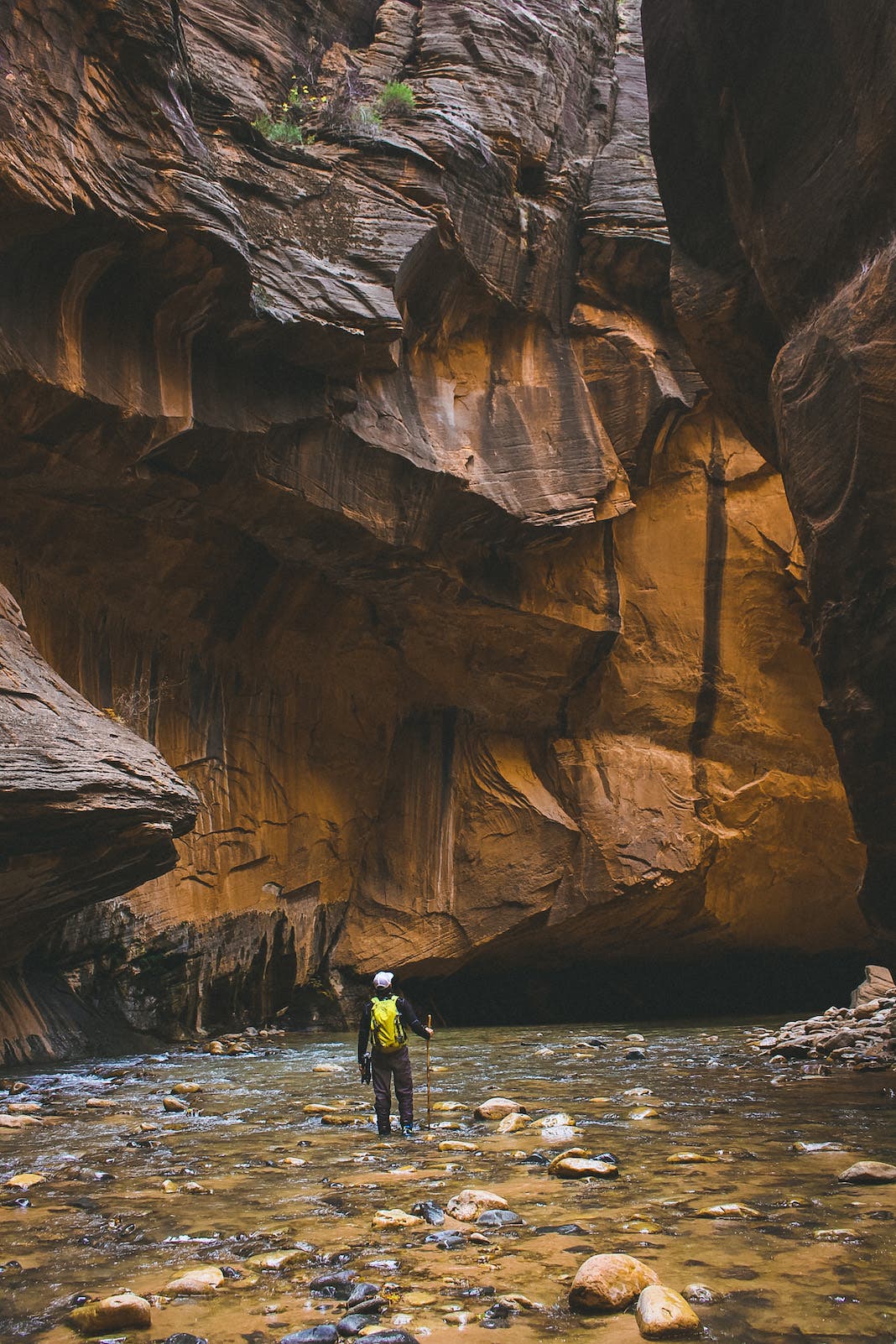
Organize, organize, organize
If you want to shoot effectively and quickly, you must have a pack that is designed with serious organization in mind. Knowing where your gear is at all times and where to reach to get it can mean the difference between capturing the perfect shot or missing out on it forever. Always take time to dissect the design of a backpack. Can you seperate your body and lenses from small items like filters, memory cards, or batteries? Does the pack have a seperated electronics sleeve or pocket for a phone, tablet, or laptop? You want to be able to create your own system for packing your backpack, and to be honest, having the freedom to pack your backpack the way you want it to maximize your accessibility and quickness is really satisfying. A proven, organizational system is needed for any serious photographer, and that includes the camera backpack you choose.

Business in the front, party in the back
If you’re spending most of your time photographing in the outdoors or traveling, I recommend buying a main compartment that opens from the back, not the front, for two main reasons:
If you lay your pack down after a long hike and the main compartment is in the front, when you go to put your pack back on, anything that your pack sat in could end up all over your back. That, my friends, is quite frustrating. Having a back-loading main compartment will eliminate this issue, as the backpack will rest on the front when laid down. Also, most backpack materials in the front are durable and will resistant any dirt, mud, or dampness, unlike the back, which normally has padding or ventilation that does not play well with outdoor elements.
If you are traveling and with expensive equipment, you run the risk of having gear stolen. The majority of big cities around the world have serious pickpocketing problems. You’d be amazed at how stealthy thieves are, and if they can slide something out of someone’s back pocket, they’ll be able to open up your backpack from the front, undetected, and steal anything they wish. I promise you, you won’t catch them doing this. They are professional thieves. You don’t want to experience the absolute agony of turning your backpack around to grab your favorite lens, and to find that it’s… gone. You will break down and cry on the cobblestone street you are walking –this happened to my friend while shooting in Prague and it wasn’t pretty (RIP, beloved Canon 85mm). So please, get yourself a back-loading backpack for that added protection and security.
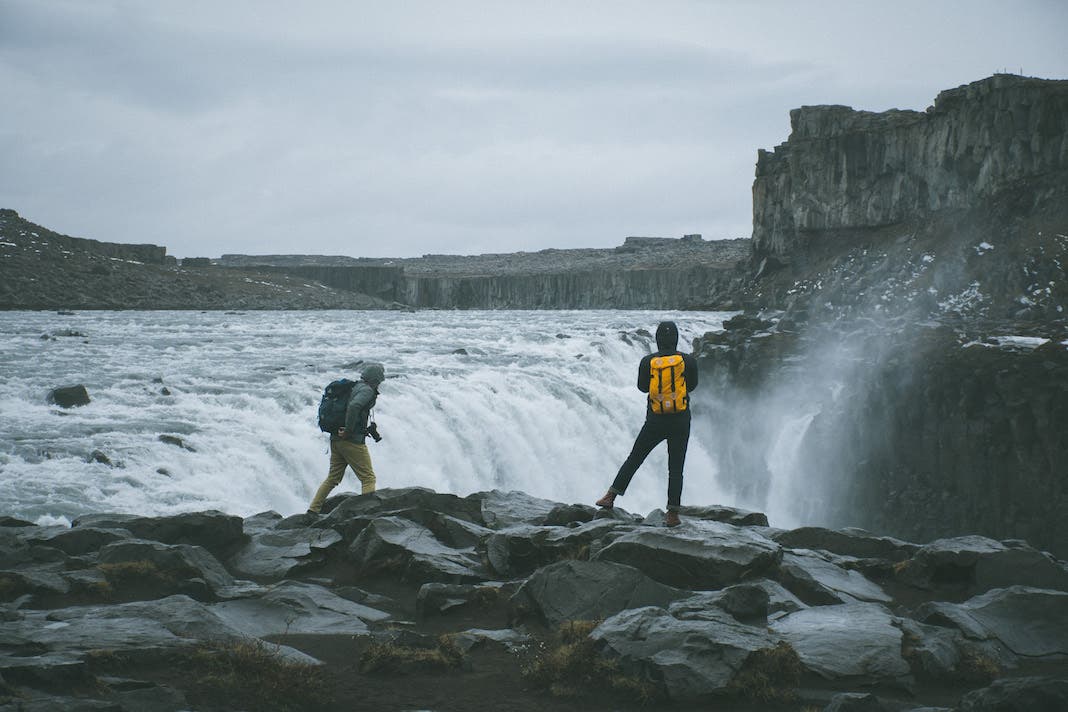
Look for a backpack that is outdoor-ready
Let’s be honest. Some camera backpacks out there are not designed for a hike, outdoor pursuit, or day-long shoot. You won’t ever find a camera backpack that doubles as a multi-day, backpacking pack, because the organizational structure needed for a camera backpack takes too much space. However, look for performance features in your next camera pack can really add to the user experience. Look for a padded, ventilated back panel system, and adjustable hip belt and arm straps for comfort and support. Make sure the prospective pack has separated water bottle sleeves that keeps water away from your gear but allows for quick hydration when you need it.
Buy a pack that is built out of durable, water-resistant materials, especially when you’re doing any shooting outdoors and in the elements. Some packs even have an integrated rain cover that shields your pack when the rain is coming down hard. Weather can change on a dime so you want a pack designed to protect your gear. Again, these features sometimes can be a forethought when making a decision on a camera, but I believe having a backpack that is outdoor ready is as important as any feature out there.
So with those points in mind, here are three “adventure-ready” camera backpacks I highly recommend (in no particular order):
The Lowepro Flipside Trek BP 450 AW Backpack, (Shop Now)
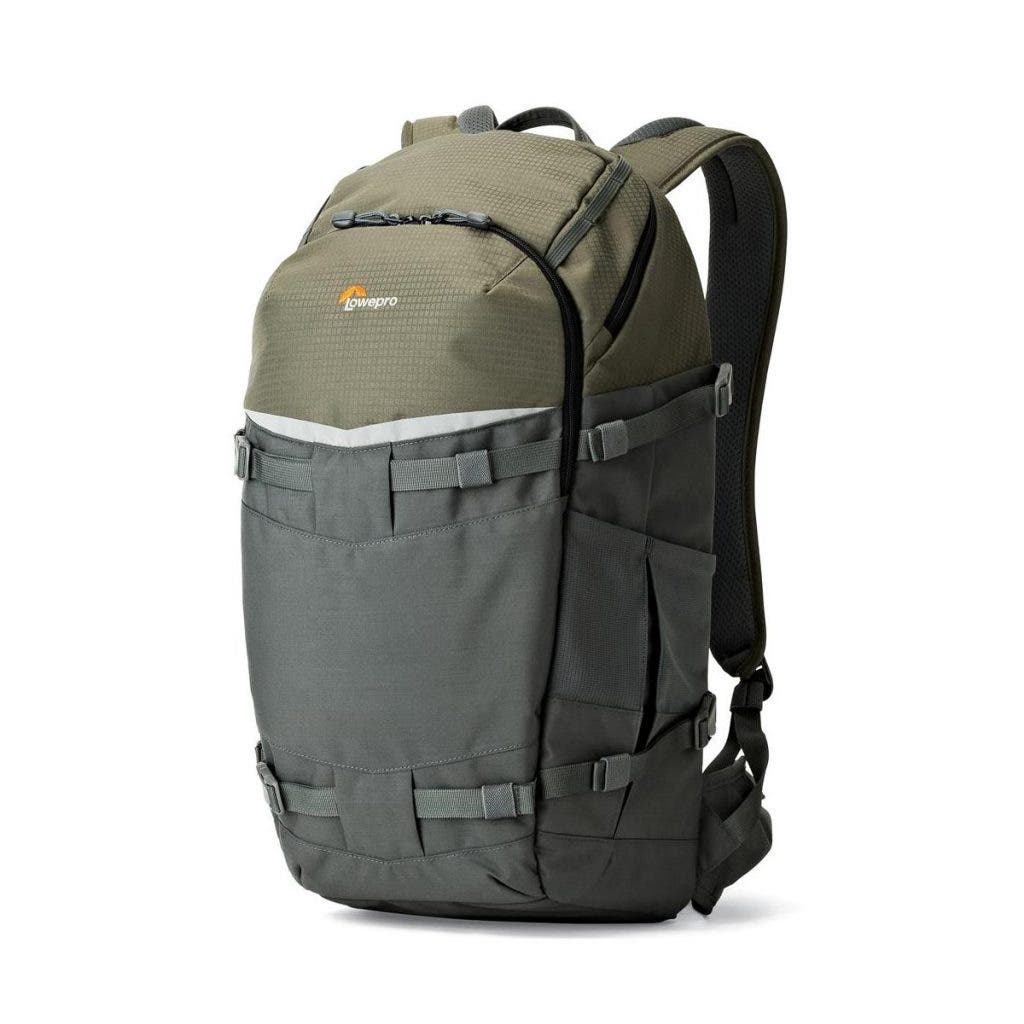
This is a pack designed with the avid hiker and trekker in mind. It’s lightweight, comfortable, yet still has all the features and protection you need. The best part? The Flipside is designed to allow the wearer to flip the pack around and get inside the large back compartment, without having to take the pack off, by using the padded hip belt to hold the pack in place.
The Lowepro Whistler BP 450 AW Backpack, (Shop Now)
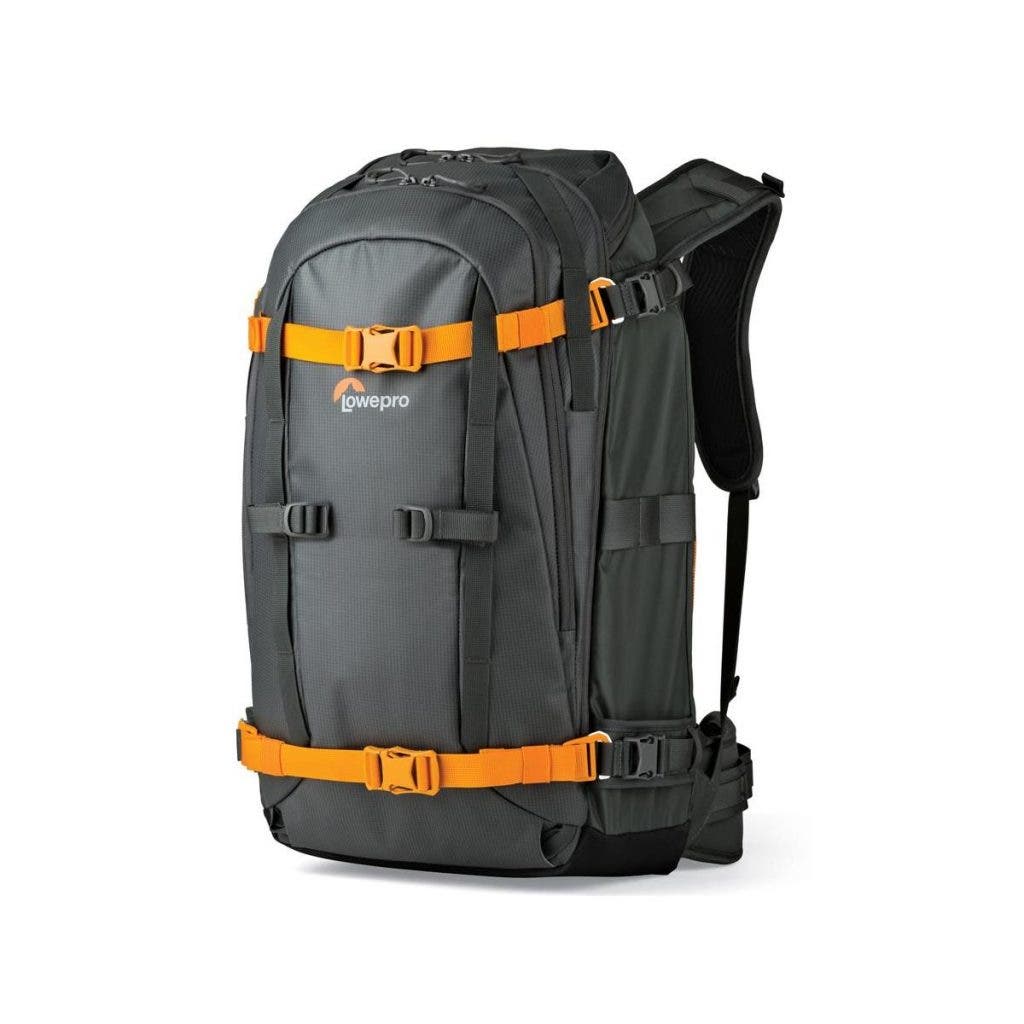
While it’s the most expensive of the three, this is one of the most durable camera backpacks on the market, and I love how the outside pocket has a waterproof and tearproof backing that allows you to put a wet rain shell or equipement inside, and it won’t seep through onto your gear. It is definitely worth the price if you are a professional who does most of your work outdoors in serious elements.
The Lowpro ProTactic 450 AW Backpack, (Shop Now)
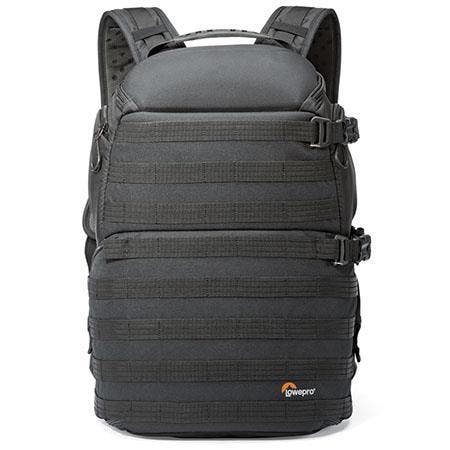
This pack is one of the most versatile I’ve ever used. Not only does it have a large back compartment, but it has conveniently placed side and top zips that allow you to access and quickly grab a lens or camera body if you need them quickly. The ProTactic also has one of the most dynamic strap systems, allowing you to connect multiple different compartments for external storage.
Now, if you’re wondering, no, I don’t have a deal with Lowpro. I just believe they make the best camera backpacks on the market, for any adventure. You can check these backpacks out, and many others, at www.adorama.com!
